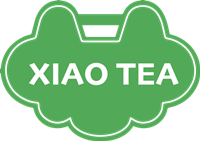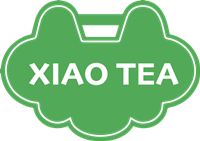In this guide, we'll explore their origins, production, flavors, brewing methods, and food pairings—so you can decide which tea wins for your taste buds.
Table of Contents
- 1️⃣ The Origins: Where Do These Teas Come From?
- 2️⃣ Tea Alchemy: How Are They Made?
- 3️⃣ Flavor Face-Off: A Sip-by-Sip Comparison
- 4️⃣ Brewing Secrets: The Perfect Cup Every Time
- 5️⃣ Tea Time Pairings: What to Eat & When to Drink
- 6️⃣ The Ultimate Choice: Which Tea Wins for You?
- Where to Buy?
1️⃣ The Origins: Where Do These Teas Come From?
Let's travel back in time to discover how these teas came to be.
Oolong's Mysterious Chinese Roots
Oolong tea traces back to China's Fujian province, where skilled tea masters perfected its unique semi-oxidized process. Unlike green or black tea, Oolong undergoes partial oxidation (10%-80%), giving it a complex flavor profile—ranging from floral and fruity to toasty and honeyed.
Today, premium Oolong tea manufacturers in China still hand-roll leaves to preserve their delicate structure.
Earl Grey: A British Legend with a Citrus Twist
Earl Grey tea, a flavored black tea, was named after British Prime Minister Charles Grey. The key ingredient? Bergamot oil, extracted from a Mediterranean citrus fruit.
While traditional Earl Grey tea manufacturers use Chinese black tea as a base, modern variations include French Earl Grey (with rose petals) and Russian Earl Grey (with citrus peels).
2️⃣ Tea Alchemy: How Are They Made?
The production processes reveal why these teas taste so distinct.
Oolong's Semi-Fermented Magic
- Withering – Fresh leaves are sun-dried to reduce moisture.
- Bruising – Leaves are shaken or rolled to start oxidation.
- Oxidation – Controlled fermentation develops flavor (less than black tea).
- Firing – Heat stops oxidation, locking in aroma.
Popular Oolong tea blends include peach Oolong tea, lychee Oolong tea, and strawberry Oolong tea—perfect for those who love fruity infusions.
Earl Grey's Black Tea Base & Bergamot Infusion
- Black Tea Foundation – Usually Assam or Keemun for robustness.
- Bergamot Oil Spraying – The citrus essence is evenly misted onto dried leaves.
- Blending – Some Earl Grey tea blends add lavender, vanilla, or cornflowers.
For a caffeine-free option, try decaffeinated Earl Grey tea or rooibos Earl Grey tea.
3️⃣ Flavor Face-Off: A Sip-by-Sip Comparison
Here's how these teas measure up in a direct comparison.
| Feature | Oolong Tea | Earl Grey Tea |
|---|---|---|
| Base Tea | Semi-oxidized leaves | Black tea |
| Dominant Flavor | Floral, fruity, sometimes toasty | Bold citrus (bergamot) with malty depth |
| Caffeine Level | Moderate (varies by oxidation) | High (black tea base) |
| Best Served | Hot, iced, or gongfu style | Classic hot with milk or lemon |
Oolong tea flavor ranges from light and floral (like white peach Oolong tea) to deep and roasted.
Earl Grey tea flavor is bright and aromatic—vanilla Earl Grey tea adds creaminess, while smoky Earl Grey tea has a bold twist.
4️⃣ Brewing Secrets: The Perfect Cup Every Time
Master these techniques to enjoy each tea at its best.
Oolong's Gongfu vs Western Brewing
Gongfu Method (Traditional):
- Use 5g leaves per 100ml water (195°F/90°C).
- Short steeps (15-30 sec) for multiple infusions.
Western Style:
- 1 tsp per cup, steep 3-5 minutes.
Try loose-leaf Oolong tea for the best experience.
Earl Grey's Classic Steep & Milk Pairing
Hot Brew: 1 tsp loose Earl Grey tea leaves, 200°F (93°C), steep 3-4 min.
Iced Tea: Double strength, pour over ice, add lemon.
With Milk? Yes! Creamy Earl Grey tea pairs beautifully with a splash of milk.
For a caffeine-free version, opt for decaf Earl Grey tea.
5️⃣ Tea Time Pairings: What to Eat & When to Drink
Discover perfect food companions for each tea.
Oolong's Best Matches
- Light Oolongs (like mango Oolong tea) → Seafood, sushi, fresh fruit.
- Roasted Oolongs → Dark chocolate, nuts, grilled meats.
Earl Grey's Perfect Partners
- Classic Earl Grey tea → Scones, lemon cakes, shortbread.
- Floral Earl Grey (like rose Earl Grey tea) → Macarons, vanilla desserts.
6️⃣ The Ultimate Choice: Which Tea Wins for You?
Take our quick quiz to find your perfect match:
✅ Choose Oolong Tea If You...
- Love exploring Oolong tea flavors (from peach Oolong tea to roasted varieties).
- Prefer a tea that changes flavor over multiple steepings.
- Want moderate caffeine with complex aromas.
✅ Choose Earl Grey Tea If You...
- Crave bold citrus (Earl Grey tea with bergamot).
- Enjoy British-style tea with milk.
- Want a consistent, aromatic cup every time.
Where to Buy?
Having compared these two magnificent tea varieties, you might wonder where to find quality examples of both. At Xiao Tea, we take pride in:
- Sourcing Oolong directly from family farms in Fujian's Wuyi Mountains
- Using only cold-pressed bergamot oil for our authentic Earl Grey
- Offering both traditional and innovative blends (like our popular Jasmine Earl Grey)
| Tea Type | Our Artisan Approach |
|---|---|
| Oolong Tea | Small-batch roasted by fourth-generation tea masters |
| Earl Grey Tea | Blended weekly for maximum bergamot freshness |
For those curious to taste the differences discussed in this article, we offer a comparison sampler with brewing guide.
Final Thought
Whether you prefer Oolong's complexity or Earl Grey's bold citrus, what matters most is finding teas made with care and expertise. May your perfect cup reveal itself in every steep.


